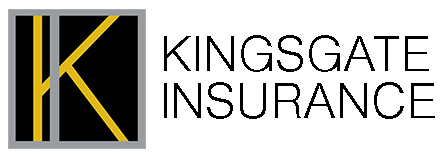Proactive Workers’ Compensation Claim Mitigation Strategies: Safeguarding Your Workforce and Business
In any workplace, ensuring the safety and well-being of employees is paramount. Despite meticulous safety protocols, accidents can still occur, leading to workers’ compensation claims. However, proactive measures can significantly mitigate the risks associated with such claims, safeguarding both employees and the business. Let’s delve into some effective strategies to proactively manage workers’ compensation claims.
1. Cultivate a Safety Culture:
Establishing a safety-first mindset among employees is crucial. Encourage open communication about safety concerns and provide regular training on hazard identification, proper equipment usage, and emergency procedures. When safety becomes ingrained in the company culture, employees are more likely to adhere to protocols, reducing the likelihood of accidents.
2. Implement Comprehensive Training Programs:
Invest in robust training programs tailored to specific job roles. Ensure that employees understand their responsibilities regarding safety protocols and injury prevention techniques. Regular refresher courses can reinforce these principles and keep safety at the forefront of employees’ minds.
3. Conduct Routine Safety Audits:
Regular inspections of the workplace can identify potential hazards before accidents occur. Addressing these issues promptly not only minimizes the risk of injuries but also demonstrates a commitment to employee safety. Utilize checklists and involve employees in the inspection process to encourage active participation in safety initiatives.
4. Provide Adequate Resources and Support:
Equip employees with the necessary tools and protective gear to perform their tasks safely. Additionally, establish channels for reporting safety concerns and provide prompt responses to address them. Employees should feel empowered to raise issues without fear of reprisal, fostering a proactive approach to risk management.
5. Promote Early Reporting and Intervention:
Encourage employees to report any incidents or near misses promptly, regardless of severity. Implement a streamlined reporting process and provide support for injured workers from the moment an incident occurs. Early intervention can prevent minor injuries from escalating into more significant issues, minimizing the impact on both the employee and the organization.
6. Collaborate with Healthcare Providers:
Forge partnerships with healthcare providers experienced in occupational medicine to facilitate swift and effective treatment for injured employees. Establish clear communication channels to ensure that healthcare professionals understand the unique needs of your workforce and can provide tailored care that promotes timely recovery and return to work.
7. Implement Return-to-Work Programs:
Develop structured return-to-work programs that enable injured employees to transition back into the workforce safely. These programs should focus on providing modified duties or accommodations that align with the employee’s capabilities during the recovery process. By facilitating a smooth return to work, businesses can minimize downtime and mitigate the financial impact of workers’ compensation claims.
8. Leverage Data Analytics:
Harness the power of data analytics to identify trends and patterns in workplace injuries. Analyzing historical data can uncover underlying causes of accidents and inform targeted interventions to prevent future incidents. By continuously monitoring and evaluating safety metrics, organizations can refine their strategies and stay ahead of emerging risks.
9. Foster a Supportive Work Environment:
Create a culture of support and empathy for injured employees, emphasizing their importance to the organization’s success. Provide access to resources such as employee assistance programs (EAPs) to address physical, emotional, and financial challenges associated with workplace injuries. Demonstrating genuine care for employees’ well-being fosters loyalty and strengthens the employer-employee relationship.
10. Stay Informed and Adaptive:
Keep abreast of regulatory changes and industry best practices related to workplace safety and workers’ compensation. Continuously evaluate and refine your risk management strategies to adapt to evolving circumstances. By remaining proactive and agile, businesses can effectively mitigate risks and create a safer, more resilient work environment.
In conclusion, proactive workers’ compensation claim mitigation strategies are essential for protecting both employees and businesses from the potential repercussions of workplace injuries. By cultivating a safety culture, providing comprehensive training, conducting routine audits, and fostering a supportive work environment, organizations can minimize risks and demonstrate a commitment to employee well-being. Through collaboration, data-driven insights, and continuous improvement, businesses can proactively manage workers’ compensation claims and promote a safer, more productive workplace for all.







Leave a Reply
Want to join the discussion?Feel free to contribute!